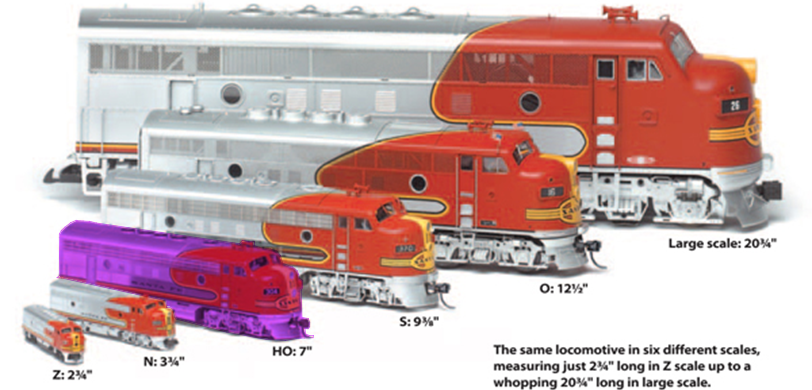OO/HO Gauge Model Railways
HISTORY
After the First World War there were several attempts to introduce a model railway about half the size of 0 scale that would be more suitable for smaller home layouts and cheaper to manufacture. H0 was created to meet these aims. For this new scale, a track width of 16.5 mm was designed to represent prototypical standard gauge track, and a model scale of 1:87 was chosen. By as early as 1922 the firm Bing in Nuremberg, Germany, had been marketing a "table top railway" for several years. The trains initially had a clockwork drive, but from 1924 were driven electrically. Accessory manufacturers, such as Kibri, marketed buildings in the corresponding scale.
HO scale trains elsewhere were developed in response to the economic pressures of the Great Depression. The trains first appeared in the United Kingdom, originally as an alternative to 00 gauge, but could not make commercial headway against the established 00 gauge. However, it became very popular in the United States, where it took off in the late 1950s after interest in model railroads as toys began to decline and more emphasis began to be placed on realism in response to hobbyist demand. HO began to overtake the larger sizes in international popularity in the 1960’s Today, HO locomotives, rolling stock (cars or carriages), buildings, and scenery are available from a large number of manufacturers in a variety of price brackets and can be considered the most ubiquitous model railway scale.
COMPARISON TO OTHER SCALES
HO scale's popularity lies somewhat in its middle-of-the-road status. It is large enough to accommodate a great deal of detail in finer models, more so than the smaller N and Z scales, and can also be easily handled by children without as much fear of swallowing small parts. The size lends itself to elaborate track plans in a reasonable amount of room space, not as much as N but considerably more than S, 0, Gauge 1 or G Scale.
COSTS
HO and OO Scale Models are usually less expensive than the smaller scales because of more exacting manufacturing process in N and Z, and also less expensive than S, O and G scales because of the smaller amount of material; the larger audience and the resultant economy of scale also drives HO prices down.
FINAL WORD
In short, HO scale provides the balance between the detail of larger scales and the lower space requirements of smaller scales. It is comparatively cheaper, is easily available and has a wide appeal for modellers and hobbyists of every kind.
SCALE REFERENCE

